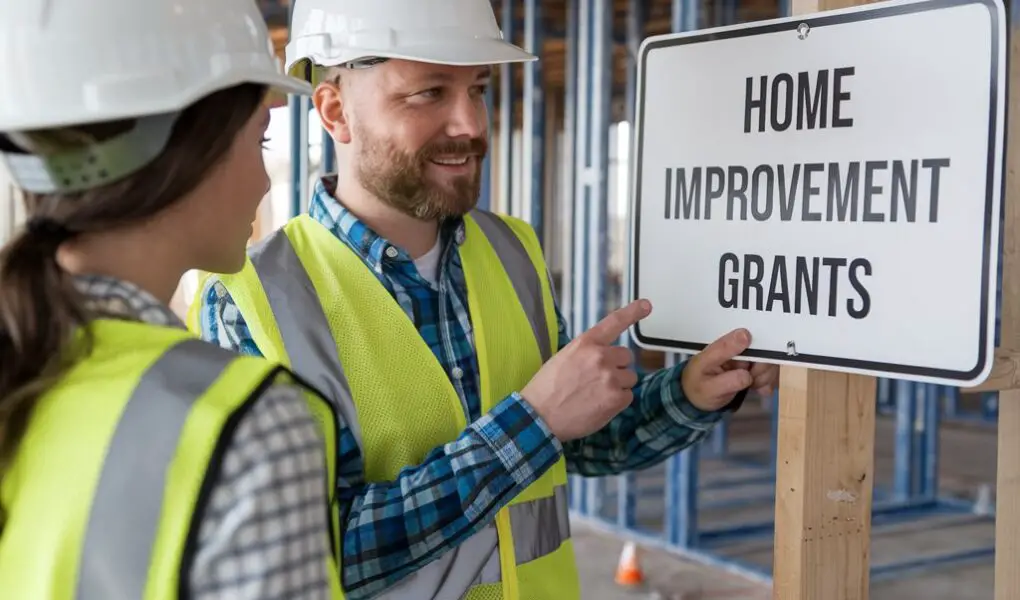When it comes to maintaining or improving properties, whether residential or commercial, essential repairs can often be the most urgent and costly. However, securing financial assistance through essential repairs grants can alleviate some of the burden, allowing property owners to get the necessary repairs done without breaking the bank.
If you’re facing a situation where your building needs critical repairs—whether it’s fixing a leaky roof, addressing electrical issues, or ensuring compliance with building codes—essential repairs grants are here to help.
In this post, we’ll explore the ins and outs of essential repairs grants, how to find them, who qualifies, and the steps involved in applying.
What Are Essential Repairs Grants?
Essential repairs grants are funding opportunities provided by various government agencies, private foundations, and nonprofit organizations to help individuals and businesses pay for critical repairs.
These grants are intended to cover essential repairs that ensure safety, health, and functionality, particularly for buildings that may have structural issues or code violations. The goal is to improve the living or working conditions of those who are unable to afford the necessary repairs on their own.
These grants typically cover repairs like:
- Roof repairs or replacement: Fixing leaks or replacing a worn-out roof to prevent water damage and mold growth.
- Electrical system upgrades: Ensuring that wiring and electrical systems are up to code and safe, thereby reducing fire hazards.
- Plumbing issues: Fixing broken pipes or ensuring the water system works properly to prevent water damage and health issues.
- Mold remediation: Removing dangerous mold that could cause health problems and structural damage.
- Safety and accessibility improvements: Installing handrails or ramps for those with mobility challenges to improve safety and independence.
By addressing these types of repairs, the funding not only preserves property values but also ensures that buildings remain safe and habitable for occupants.
Why Are Essential Repairs Grants Important?
Essential repairs grants provide a lifeline for property owners who need repairs but lack the financial resources to pay for them.
According to the U.S. Department of Housing and Urban Development (HUD), about 60% of Americans live in homes that are more than 30 years old, with many of these homes in need of substantial repairs. As these homes age, the costs of maintaining them can escalate, making repairs unaffordable for low- and moderate-income families.
a) Improving Quality of Life
For many, a well-maintained home is more than just a structure—it’s a foundation for a stable and healthy life. Essential repairs can prevent health hazards like mold, lead paint, or asbestos, which often accompany older properties in disrepair. These hazards can lead to serious health issues, especially for children, the elderly, and those with respiratory conditions. By providing grants, organizations can ensure that homes are safe and conducive to a high quality of life.
b) Boosting Property Values and Community Stability
When essential repairs are made, property values can increase, benefiting not only the homeowner but the surrounding community. An increase in property values can lead to more community investment, better schools, and improved local services. Additionally, well-maintained properties can reduce crime rates and deter vandalism, fostering a stronger sense of community and civic pride.
c) Cost Savings in the Long Term
Neglecting essential repairs can lead to larger, more expensive problems down the road. For example, a small leak left unattended could turn into significant water damage, requiring extensive remodeling or even structural repairs. By addressing these issues early on through grants, homeowners and communities can save considerable amounts of money in the long run. Preventative maintenance, supported by these grants, often costs less than emergency repairs and the subsequent loss of property value.
Who Qualifies for Essential Repairs Grants?
Eligibility for essential repairs grants varies based on the specific grant program, but common requirements often include:
- Income Restrictions: Many grants are targeted toward low- to moderate-income individuals and families. In some cases, individuals must meet certain income thresholds to qualify. This ensures that the funds go to those who need them most.
- Property Ownership: Some grants are only available to homeowners, while others may include landlords, nonprofits, or small business owners. This means that if you own a property, be it a private residence or a commercial building, you might be eligible for help.
- Critical Need: The repairs needed must often be urgent or related to health and safety concerns, such as structural problems, electrical issues, or issues with heating and plumbing systems. Demonstrating how these repairs will impact health and safety is usually a key component of the application.
- Location: Some grants are specific to certain geographic areas. For example, federal and state grants may prioritize communities in economically distressed or disaster-impacted regions. Rural areas often have dedicated programs to ensure that residents outside major urban centers also have access to these funds.
Types of Essential Repairs Grants
There are various sources from which you can apply for essential repairs grants. Let’s take a closer look at some of the most common ones:
1. Federal Grants
The federal government offers a variety of grants to assist property owners with essential repairs. Programs like the HUD’s HOME Investment Partnerships Program provide funding for home repairs, particularly for low-income families. Another example is the U.S. Department of Agriculture (USDA) Rural Development Program, which offers grants and loans for rural homeowners to repair or improve their homes.
Example: USDA Single Family Housing Repair Loans & Grants
This program provides grants for eligible low-income homeowners to repair their homes in rural areas. Eligible applicants can receive up to $7,500 in grant funding to fix health and safety hazards or for structural repairs. This includes tackling issues like outdated electrical wiring, unsanitary conditions, and structural decay that compromise safety.
For more details on the USDA program, visit the USDA Rural Development website.
2. State and Local Government Grants
Many state and local government agencies offer essential repairs grants targeted at specific regions. These can vary significantly depending on where you live, so it’s important to research your local options. Often, these grants will be administered through your state’s housing department, local development agencies, or county offices.
Example: The California Housing Finance Agency (CalHFA)
CalHFA offers a Homebuyer’s Assistance Program that includes repair grants for homes in need of urgent repairs. Their Home Rehabilitation Program helps low-income families make repairs to their homes, ensuring they are safe and habitable. Assistance can cover everything from cosmetic updates to major structural repairs, all aimed at stabilizing the community and improving living conditions.
Learn more about programs available in California at the CalHFA website.
3. Nonprofit Organizations
Nonprofits play a crucial role in providing essential repairs grants. These organizations often target specific needs, such as elderly homeowners, veterans, or people with disabilities. They may focus on particular regions or types of repairs based on their mission statements.
Example: Habitat for Humanity’s Critical Home Repair Program
Habitat for Humanity has a Critical Home Repair Program that provides repairs to low-income homeowners, focusing on safety, accessibility, and health-related repairs. For example, they might install wheelchair ramps, repair aging staircases, or remove hazardous materials from homes. Habitat for Humanity often relies on volunteer labor and donations to supplement these grants, further extending the reach of their programs.
Visit Habitat for Humanity’s website for more information on their programs and how you can get involved.
4. Private Foundations
Some private foundations provide grants for essential repairs, especially in low-income or disaster-impacted areas. These grants can sometimes be more flexible than government-funded programs, addressing a broader range of needs or offering quicker turnaround times for application reviews.
Example: The Lowe’s Heroes Program
Lowe’s, through its Heroes Program, offers home improvement grants to veterans and senior citizens in need of essential repairs, such as replacing worn-out windows, flooring, or siding. This not only helps maintain the value of the property but also honors the service and sacrifices of veterans, ensuring they live in safe, comfortable environments.
Learn more about Lowe’s Heroes Program on the Lowe’s Community Impact page.
How to Apply for Essential Repairs Grants
Applying for essential repairs grants can seem daunting, but breaking it down into manageable steps can help.
Here’s a simple guide to get you started:
Step 1: Research Available Grants
Start by researching grants that are specific to your location and needs. Use search tools like Grants.gov, your state or local government websites, or nonprofit websites to find grant opportunities. Be sure to check eligibility criteria carefully. Some websites aggregate information about available grants, making the search process easier.
For example, Websites like Benefits.gov provide tools to help you find federal grants. Similarly, local libraries or community centers often have guides or workshops on finding and applying for grants.
Step 2: Gather Required Documentation
Each grant will have its own set of required documents. Some common documents that you might need include:
- Proof of income: Tax returns, pay stubs, or other financial statements.
- Proof of property ownership: Deeds, mortgage statements, or property tax receipts.
- Details about the repairs needed: This could include inspection reports, quotes from contractors, or photos of the damage.
- Identification documents: Driver’s license, social security number, or any other form of government ID.
Gathering these documents beforehand ensures that you can complete your application promptly once you find a suitable grant program.
Step 3: Write a Strong Grant Proposal
Writing a strong grant proposal is key to securing funding. While some grants have specific forms you must fill out, others require a narrative or essay-style response. Your proposal should:
- Explain the problem: Describe why the repairs are necessary. Be specific about issues like safety hazards, accessibility problems, or code violations.
- Provide a detailed repair plan: Include quotes from contractors, a clear breakdown of what needs to be fixed, and a timeline for how long the repairs will take.
- Highlight your qualifications: Explain why you (or your organization) are qualified to carry out the repair. This might include previous experience, a community role, or relevant certifications.
- Include a budget: Present a detailed budget for the repairs, including labor, materials, and any additional costs. Be transparent and realistic about costs.
Many community centers and nonprofit organizations offer workshops on how to write grant proposals effectively. Additionally, online resources like The Foundation Center provide guidance and templates for writing proposals.
Step 4: Submit Your Application
Once you’ve completed the application, be sure to submit it on time. Pay attention to deadlines, as many grants have limited application windows. Keep a copy of all your submitted materials for future reference. Electronic submissions often provide a confirmation receipt—save this as proof of submission.
It’s wise to have a checklist when submitting your application to ensure that you haven’t missed any critical components. Some organizations use online portals for submissions, making the process more straightforward. If you encounter technical difficulties, reach out to the grant administrator for assistance.
Step 5: Follow Up
After submitting your application, it’s always a good idea to follow up. If you don’t hear back within the expected timeframe, reach out to the grant administrator to check on the status of your application. A polite inquiry shows your interest and commitment to the process. Keep notes on any feedback or questions raised during follow-up, as this information can be invaluable for future applications, whether successful or not.
Key Tips for Success
Securing essential repairs grants is not just about submitting an application—it’s about presenting a compelling case for why the repairs are necessary and how the funds will make a difference. Here are some key tips to enhance your success:
- Keep it Simple: Avoid jargon and technical language in your proposal. Use straightforward, easy-to-understand language to explain why your repairs are necessary. This ensures that the committee or reviewer, regardless of their background, can grasp the importance of your request.
- Be Detailed: The more information you provide, the better. Detailed estimates, clear timelines, and a thorough explanation of the repairs will strengthen your application. The specificity of your plan often distinguishes a strong application from a mediocre one.
- Use Supporting Data: Including statistics, inspection reports, or expert opinions can bolster your proposal. For example, citing the HUD report that 60% of homes need repairs highlights the urgency and relevance of your request. Additionally, linking to local news stories or research studies can demonstrate the broader impact of addressing critical repairs in your community.
- Know the Deadlines: Be mindful of deadlines and submit your application ahead of time to avoid any last-minute issues. Late submissions are usually not considered, regardless of merit. Mark your calendar and set reminders for due dates.
- Seek Feedback: Before submitting, get feedback on your application from someone experienced with grants. They might catch errors, omissions, or suggest improvements that strengthen your case.
Essential Resources for Securing Grants
Finding and securing grants can be a challenging process, but leveraging the right resources can make a substantial difference. Here are a few reputable sources and platforms that can help you navigate the world of essential repairs grants:
- Grants.gov: A comprehensive database for finding federal grants. It allows you to search by eligibility, category, and agency, streamlining your search for grants that you might qualify for.
- HUD.gov: The U.S. Department of Housing and Urban Development offers detailed information about programs offering repair grants for low-income individuals. It includes guidance on eligibility and application processes.
- Local Housing Authorities: Often, local government agencies maintain lists of grants or local programs designed to assist with home repairs. They can also provide guidance specific to your area.
Additionally, consider joining online forums or local community groups dedicated to home improvement or community development. These networks often share information about new grant opportunities, successful application strategies, and experiences that can guide you through the process.
The Benefits of Subscribing to Expert Guidance
Grant writing can be a complex process, and staying updated with the latest strategies, templates, and tools can significantly enhance your success rates. One valuable resource that you can tap into is the Grant Writing Academy Newsletter.
By subscribing, you gain access to:
- Tips and Strategies: Expert advice on writing compelling grant proposals that stand out. This includes advice on tailoring your narrative, budgeting effectively, and aligning your proposal with funders’ priorities.
- Templates and Tools: Pre-designed templates that guide you through the proposal structure, budgeting, timelines, and more. These can save you time and ensure you don’t miss critical components.
- Insider Knowledge: Updates on new grant opportunities and best practices in grant management, directly from professionals in the field.
- Community Support: Join a community of like-minded individuals who are also learning and sharing their grant writing experiences. Peer feedback and networking can open doors to new opportunities.
Subscribe now to the Grant Writing Academy Newsletter and arm yourself with the knowledge and resources that can elevate your grant application to the next level. Engaging with this newsletter is a step towards transforming your approach, increasing your success rates, and ultimately, securing the funding you need for those essential repairs.
Conclusion:
Essential repairs grants are a valuable resource for property owners who need critical repairs but cannot afford the full cost. By understanding the application process, researching available programs, and leveraging resources, you can secure the funding you need to ensure your property remains safe, functional, and healthy.
Whether you’re a homeowner, small business owner, or nonprofit organization, there are various options available to help you get the job done. The key is to approach the process methodically: research thoroughly, prepare a detailed and honest proposal, and follow up diligently.
To increase your chances of success even further, subscribe to the Grant Writing Academy Newsletter for expert tips, strategies, templates, and tools that will help you navigate the grant application process and enhance your success rate. With the right guidance and resources, you’ll be empowered to secure funding and make those essential repairs that transform not just your property, but your community.
Additional Resources and Support
a) Expand Your Knowledge
The grant writing field is always evolving. Keep learning and improving your skills to stay competitive.
Recommended Resources:
- Request for Proposal Success: How to Write Proposals That Win: Learn the techniques and strategies to create standout proposals.
- Tech Startup Funding Secrets: Navigating Grants for Maximum Growth: Perfect for those in the tech sector looking to leverage grants for scaling.
- Grant Proposal Guide for Environmental Projects: Tailored for environmental initiatives seeking to secure impactful funding.
- The Ultimate Guide to Federal Grant Applications: Techniques for Success: Master the complexities of federal grants with actionable insights.
Explore More Books Here
b) Invest in Expert Guidance
Want to fast-track your growth and achieve even more success?
Join one of our mentorship programs for tailored advice and support:
Mentorship Programs:
- 3-Month Mentorship: The Foundation Builder: A short-term plan to refine your grant writing skills and win your first (or next) grant.
- 6-Month Mentorship: The Proposal Pro: Dive deeper into strategies, proposal reviews, and funding plans.
- 1-Year Mentorship: The Funding Champion: Build long-term success with comprehensive guidance, unlimited reviews, and exclusive resources.
C) Book a One-on-One Consultation
Sometimes you just need personalized advice to tackle challenges or fine-tune your strategy. Let’s work together to solve your unique grant writing challenges.






